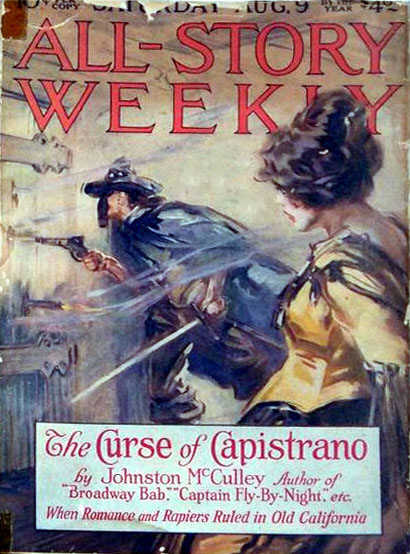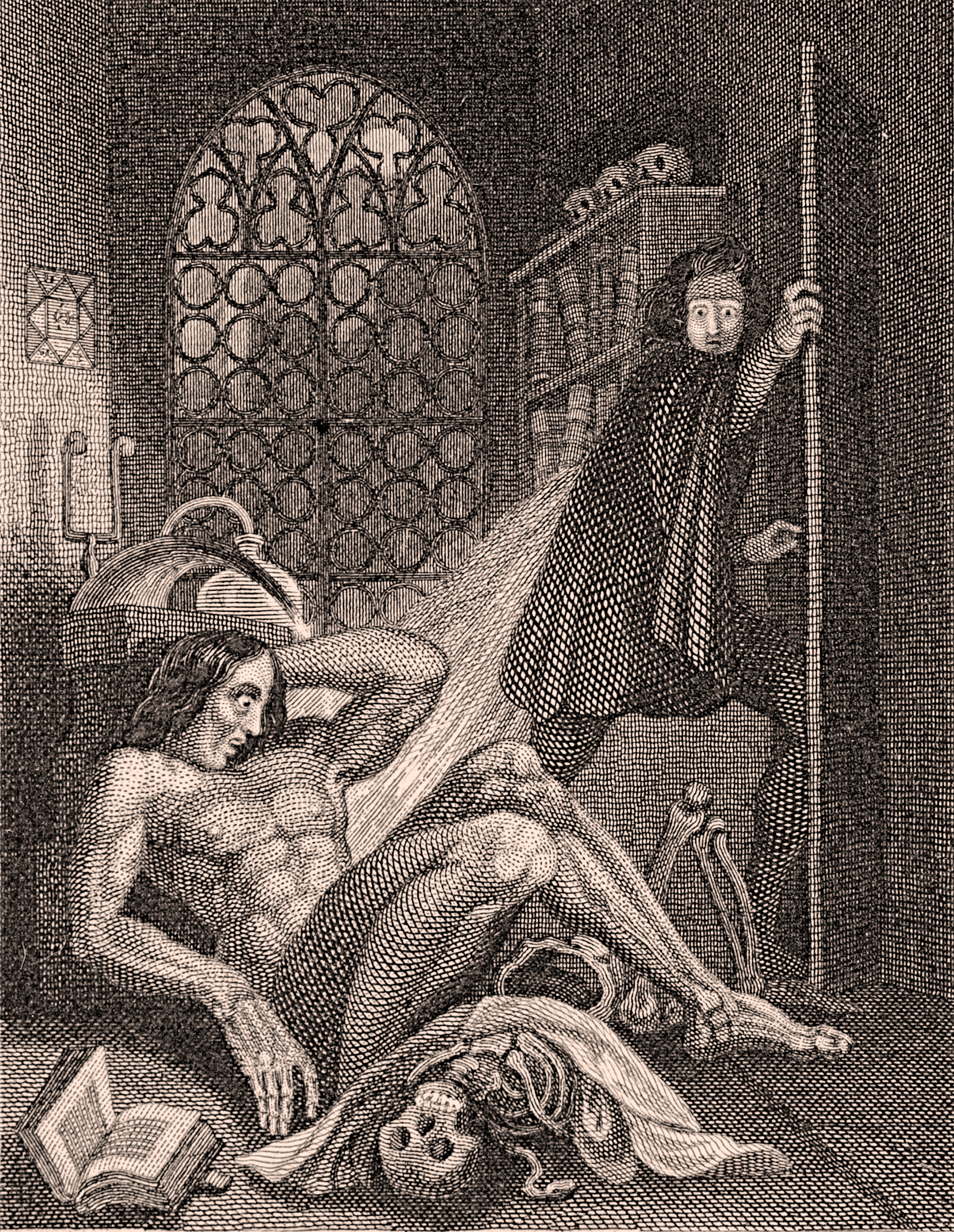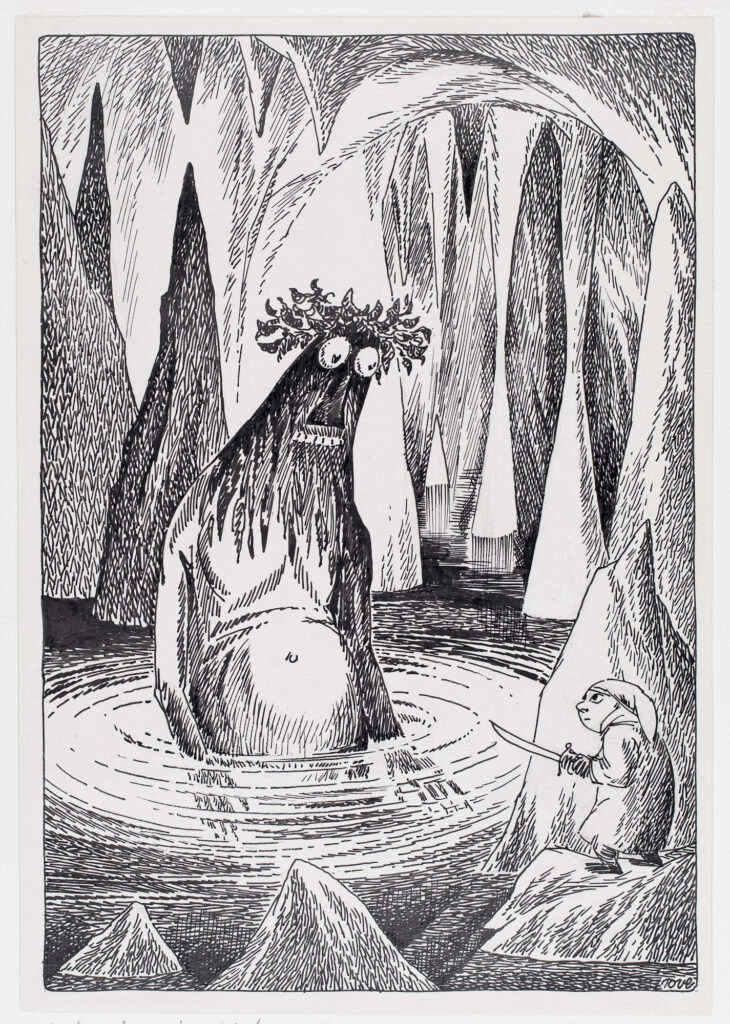The homogenizing impact of mass media is a blended bag. It’s definitely useful for homeowners of mental properties that their fictional characters be instantly recognizable to audiences worldwide. It’s additionally a small disgrace to see imaginations have such inflexible pointers on the appearances of characters. How enjoyable it’s to think about the methods completely different cultures depict figures from books, mythology, and so forth earlier than cultural juggernauts like Disney made essentially the most acquainted character designs.
For the aim of the record, all artwork included must have been revealed for public consumption. In any case, virtually each character featured in mass media went by way of a growth course of. In these instances, think about the hundreds, and even perhaps hundreds of thousands of people that had a completely completely different imaginative and prescient of well-known characters for many years, from how we image them now…
10. Zorro

As unlikely as it’s that you just’re accustomed to Joseph McCulley’s characters Broadway Bab or Captain Fly-By-Night time, it’s about equally probably that you just’ve heard of the masked sword fighter in black. That mentioned, you in all probability know of Don Diego de la Vega’s alias from years of flicks and TV exhibits reasonably than the 1919 story by which Joseph McCulley originated the character in The Curse of Capistrano. McCulley didn’t have any concept what vein of gold he’d struck with this story of a noble who fought for the individuals, as he had Zorro give away his secret identification by the tip of the story, one thing certainly Batman and all the opposite Zorro derivatives would by no means do anyplace close to their origin story.
The quilt illustration for All-Story Weekly which launched him to the world mirrored simply how far the unique imaginative and prescient of Zorro is from the one hundreds of thousands later skilled. First off, the clothes is far more generic reasonably than all-black. Second, the masks is hardly the taut bandana tied over the top with holes punched in it, however a bit of material hanging like a curtain. It was Douglas Fairbanks and the founders of the film studio United Artists who gave Zorro a makeover, along with his now iconic masks and the all-black clothes that Fairbanks wore for the 1920 hit movie The Mark of Zorro.
9. Frankenstein’s Monster

It’s fairly widespread data how a lot the 1931 Frankenstein modified the general public notion of Victor Frankenstein and his monster from Mary Shelley’s 1818 novel. There’s no Igor within the ebook, there’s no Captain Robert Walton’s Arctic Expedition framing machine within the film, and so forth. Much less identified is simply how far the portrayal of the monster shifted. The angular brow and neck bolts of the Boris Karloff make-up job are nowhere to be present in Mary Shelley’s unique.
Greater than a century earlier than make-up designer Jack Pierce determined how we’d all envision Frankenstein’s monster, Mary Shelley wrote about how the eyes of the monster had been yellow. That may have been arduous to speak on black and white movie (although sarcastically it was the unique coloration of Pierce’s make-up: The long-lasting inexperienced look got here from posters). However what would have been simpler would have been to match Shelley’s description of lengthy black hair for the monster. It’s an comprehensible change, as lengthy hair was retro in 1931. It’d be like if Freddy Krueger had an afro for Nightmare on Elm Avenue.
8. Dracula

Talking of nineteenth Century horror icons, it’s a testomony to the endurance of Tod Browning’s 1931 extraordinarily free adaptation of Bram Stoker’s 1897 novel that after most of a century of reimaginings and recastings, it’s nonetheless in all probability Bela Lugosi individuals consider once you point out Dracula. This might probably have caught Stoker unexpectedly, and we are able to say that with a sound foundation. Whereas Stoker handed away 19 years earlier than Browning’s movie in 1912, he lived to see and approve the primary illustration ever used to promote copies of his vampire story.
Within the illustration by an sadly forgotten artist, Dracula’s hair is white, he has a mustache, and his hairline is receding far previous the purpose Lugosi’s was. It is because the scene takes place throughout a portion of the story the place he’s decrepit from lack of human blood earlier than ingesting from Jonathan Harker rejuvenates him. Regardless of being illustrated repeatedly (resembling additionally for the 1916 version) the scene doesn’t seem within the film and thus just isn’t a part of the favored Dracula notion.
7. Bugs Bunny
An enormous display determine and family identify for occurring eighty years now, the general public acquired to see the event of the character over a number of years in a few brief movies. The commonly agreed first look of the unique model of the character was in 1937 the place his nemesis wasn’t Elmer Fudd however Porky Pig of all characters in Porky’s Hare Hunt. The primary cartoon the place the character had all of the trademark traits (named Bugs Bunny, grey fur, an antagonist who wished to shoot him, tall and slim, Bronx accent, and so forth.) was 1940 for A Wild Hare.
Probably the most fascinating cartoon throughout these years of growth was 1939’s Prest-O Change-O. There the setup is that two non-anthropomorphized canines enter a supernatural home to evade a canine catcher and get stricken by proto-Bugs Bunny, This model of Bugs is all white (a prime hat with gloves on a desk within the background implies he’s magical as a result of he’s a magician’s rabbit) and has no dialogue in addition to a mocking guffaw. For a contemporary viewer, it may be jarring to see Bugs Bunny as each an antagonistic determine and to “lose” by the tip of a cartoon. It’s additionally the one cartoon with a Bugs Bunny character at present within the public area.
The magic Proto-Bugs Bunny loved a short resurgence in recognition in 2023. A scene from the cartoon was proven looping on a TV for a scene within the ultra-minimalist horror movie Skinamarink. Within the looped clip, the rabbit disappears by urgent its fingers collectively on its head and ft, which conjures up the villain of Skinamarink to do one thing implicitly very grisly to one of many kids it imprisoned. The juxtaposition between the benign cartoon and the horrific recontextualization impressed, amongst different issues, very vivid fan artwork.
6. Cinderella

Most likely no single entity profited greater than the Disney firm, which raked in a whole lot of hundreds of thousands from the 1950 and 2015 films. To not point out all the flicks associated to the Cinderella story, resembling 2004’s Hillary Duff movie A Cinderella Story or 2014’s Into the Woods. the story, after all: A slave has one among her footwear stolen by a fowl, who then drops it on an Egyptian king, who units out to seek out the one-shoed lady to marry her.
Oh, that doesn’t sound acquainted? Properly, that’s as a result of it’s the story of Rhodopis, a narrative of a Greek courtesan compelled into slavery in Egypt who’s raised to royalty by dropping her shoe which dates again to 600 BC. There was an try and painting it as a historical past amongst a number of authors by attributing it to Greek Historian Strabos, however the efforts have been totally debunked. Whereas there have been actually a whole lot of tales that observe the broad contours of the Cinderella story from folklore from international locations as distant as China, Rhodopis’s story has a extra direct lineage to trendy Cinderella in that the story was translated for European audiences by Giambattista Basile in 1634 for Charles Perrault to adapt into the acquainted model in 1697. Rhodopis hardly fell into obscurity even because the Cinderella story’s story grew to become ubiquitous. For instance, the picture featured above, that includes Rhodopis along with her good-looking prince Psammetiucus, was rendered in 1783, so Rhodopis was clearly a preferred determine greater than a century after Basile launched her to Europe.
5. Aslan
Is C.S. Lewis’s traditional fantasy collection that was first revealed in 1950 higher identified for the 120 million books offered in 47 languages, or for the movie trilogy that grossed $1.5 billion worldwide? Both method, undoubtedly the only most recognizable character from it’s Aslan, the lion who’s such a paragon of advantage that he’s typically thought of an equal of Jesus Christ, full with a resurrection arc. As acquainted because the character is, there probably are many followers who don’t image one thing similar to the work of Pauline Baynes.
Baynes was an icon of youngsters’s fantasy story illustrations and was launched to C.S. Lewis primarily based on her work doing the preliminary illustrations for The Hobbit. Whereas in correspondence along with her, Lewis was beneficiant with reward, in personal he was crucial of the usage of anatomy in her artwork, with particular consideration being given to how he felt she couldn’t draw a lion. Actually one among her 1950 illustrations of Aslan taking part in with Lucy and Susan appears to be like very removed from subsequent variations. The fur on the physique is darker, the mane has massive quantities of black in it. He appears to be like extra like Scar from The Lion King than how he was rendered within the 1979 or 2006 films.
4. Santa Claus
:focal(400x410:401x411)/https://tf-cmsv2-smithsonianmag-media.s3.amazonaws.com/filer/94/2e/942ec9f5-4b0b-44df-a169-3d62d0e9bb8b/harpers_1863_01-_thomas-nast-santa-claus.jpg)
One of many extra widespread misconceptions of this vacation icon is that the depiction we’re accustomed to is a creation of the Coca-Cola firm. The reality is far more benevolent, and from an American perspective, far more patriotic. It additionally predates the creation of the Coca-Cola firm by about 30 years.
In January 1863, spirits for the Northern states preventing to protect the Union had been low. The Military of the Potomac had not too long ago been defeated on the significantly grueling Battle of Fredericksburg. So Nast drew one among his attribute items of propaganda for the January 3 situation of Harper’s Weekly, that includes Jolly St. Nick distributing presents to Union troops. He’s sporting a coat of blue with white stars. Within the spirit of the occasions, he’s providing a puppet with a rope round its neck to the closest Union soldier. This can be a reference to the lyric from the music “John Brown’s Physique” that Accomplice president Jefferson Davis needs to be “dangle(ed) from a bitter apple tree.” So for individuals who suppose trendy grim parodies of Santa Claus resembling a slasher villain or as a profane sleazy determine are corrupting an harmless determine, it seems trendy Santa all the time had a little bit of an edge to him.
3. Robin Hood

While you suppose Robin Hood, you in all probability think about Kevin Costner, Errol Flynn, or in case you’re a member of a sure on-line neighborhood, a fox. What you in all probability don’t think about is the primary woodcut of the legendary outlaw. Relationship to the fifteenth Century, a couple of century after the primary identified reference to him in 1377 AD by William Langland in Piers Plowman.
If you happen to’re questioning why this model of Robin Hood, or “Robyn Hode” because the woodcut was labeled, has his hat tied to his head as a substitute of the acquainted dashing cap, it’s due to modern slang. At that time in British historical past, some unbiased landowners weren’t a part of the feudal hierarchy (i.e. not lords, knights, and so forth), and had been often known as yeomen. Individuals who lived independently as foresters had been typically referred to as “yeomen of the forest.” So portraying Robin Hood with yeomen garb was primarily a visible pun. Unsurprising that the look was changed by sleeker adventurer costumes.
2. Gollum

Swedish illustrator Tove Janosson’s portrayal of essentially the most well-known corrupted determine in fantasy would be the most jarring on the record. As illustrated within the 1960 Scandinavian version, Gollum was a towering determine, very far faraway from any of the animated or live-action depictions the place he and the “halfling” Bilbo are roughly equal heights.
Whereas the bulbous eyes are pretty much like the frog eyes that he had within the Rankin-Bass cartoon, the wreath of leaves on his head is singular, although a staple of fantasy figures of the area. The character extra carefully resembles Treebeard from the 1978 Ralph Bakshi cartoon. Followers of Tove Janosson’s iconic collection The Moomins may even probably be reminded of the fearsome determine the Groke.
1. Jesus Christ

Now you’ll know we didn’t say that the figures on this record had been “fictional” or “characters.” No matter your beliefs about Jesus Christ, the information of the matter are that there have been no cameras in Jesus of Nazareth’s day and the New Testomony is obscure on Jesus’s look. About essentially the most detailed it will get is Isiah 50:6 when Jesus mentioned he provided his cheeks to his Roman executioners as they “plucked the beard”. So everybody must content material themselves with hypothesis.
Throughout the peak of the Roman Empire, it was trendy for the the Aristocracy to be clean-shaven. Thus surviving early depictions of Jesus observe swimsuit. For instance, a sixth Century depiction in Shivta, Syria present in 2018 has no beard. The 360 AD mosaic discovered on the Hinton St. Mary Church in Dorset, England was claimed to have been modeled off Roman cash as a proof for why he has no beard, Roman laurels, and pomegranates round his head, a reference to the Greek goddess Persephone. That’s the kind of localization to be anticipated with out a central hierarchy to ascertain a constant canon.
Dustin Koski wrote very unfamiliar variations of acquainted characters for his ebook Robin Hood Vs. King Arthur.
Different Articles you Would possibly Like

